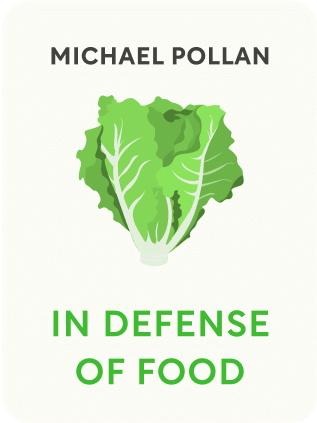

This article is an excerpt from the Shortform book guide to "In Defense of Food" by Michael Pollan. Shortform has the world's best summaries and analyses of books you should be reading.
Like this article? Sign up for a free trial here .
What is the Western diet? What are the health implications of eating in the Western-style?
A Western diet is characterized by a high intake of saturated fat and refined carbohydrates and a low intake of fresh fruit, vegetables, and whole grains. Researchers are finding that eating in the Western-style does more than just cause weight gain. It is also associated with a heightened risk of developing stroke, heart disease, type-II diabetes, and cancer.
Continue reading to learn how we came to rely on the Western diet and, more importantly, what we can do to move away from it.
The Rise of the Western Diet
The Western diet took a sharp turn in the 20th century, when the focus on positive nutrition turned from whole food to nutrients (chemical and mineral compounds found in food). Although the theoretical aspects of this shift sprouted between the late-19th and mid-20th centuries, the effects didn’t become wholly obvious until the 1980s.
On grocery store shelves in the 1980s, food identified as food was being replaced by packages identified by their nutrient components, whether bad or good. Words like cholesterol, fiber, and saturated fats replaced eggs, grains, and meat. This new strategy suggested that the inclusion or exclusion of these substances equaled positive or negative health for consumers. Real food became antiquated. Nutrients took over as the shiny new, lab-tested giant of healthy eating—eat the good and avoid the bad to find physical Nirvana. The events that led to this shift and those that have followed created the Western diet.
How Nutrients Came to Be
The work of an English doctor and chemist would change the face of the Western diet forever. William Prout was the first person to isolate and identify the three main compounds in food, called macronutrients: fat, protein, and carbohydrates. Following on Prout’s coattails was German scientist Justus von Liebig, one of the founders of organic chemistry. Liebig took these macronutrients and broke them down further into a handful of micronutrients he claimed were solely responsible for digestion and growth.
Following this logic, Liebig created bouillon and the first baby formula to concentrate these vital nutrients. However, a few observations challenged his assertion:
- Doctors found that babies fed Liebig’s formula were not thriving.
- Sailors were suffering a number of health ailments despite receiving plentiful amounts of fats, proteins, and carbs.
- In contrast, oranges and potatoes had a curative effect on the sailor’s health.
These observations led to further research, and from those efforts came vitamins. Vitamins became the new best thing in nutritional science. Deficiency conditions, like beriberi and scurvy, cleared up because of certain vitamins. Then vitamins were linked to growth and vitality. By the mid-20th century, vitamins took center stage as the answer to the question of what to eat, leaving whole foods further behind.
Cementing Nutrient-Focused Science
In the 1960s, the government sought answers to the growing health crisis in America, including the increase of killer diseases and malnutrition. The Senate Select Committee on Nutrition and Human Needs was formed to research the relationship between food and health. At the head of the committee was South Dakota Senator George McGovern. For several years, scientists studied food consumption and health in America and discovered some interesting patterns.
- During World War II, meat and dairy were strictly rationed, and rates of heart disease were reduced.
- After the war, when rationing was no longer required, coronary heart disease skyrocketed in America.
- Other cultures who maintained a plant-based diet after the war did not experience the same results.
These findings created the “lipid hypothesis,” which stated that fat and cholesterol, mostly from meat and dairy, led to increased rates of heart disease. This hypothesis motivated the committee to create the Dietary Goals for the U.S. guidelines in 1977. This report advised Americans to reduce their consumption of red meat and dairy. It did not exist for very long.
The meat and dairy industries strongly criticized the committee’s findings, including cattle ranchers in South Dakota—Senator McGovern’s constituents. As a result, a retraction was printed that changed the advice from “eat less red meat and dairy” to “choose meat and dairy that reduce saturated fats.” With this change, a domino effect occurred in the industrial, political, and social spheres.
- The focus was taken from the problematic food and put on a problematic nutrient.
- If the actual food was not responsible for negative health, then the powerful meat and dairy industries were not, either.
- McGovern was voted out of office by food-industry lobbyists, which sent a powerful message to other government entities who might broach the topic again.
- The concept of “eating less” was erased from nutritional guidelines forever.
The Ensuing Aftermath
The problem with the changes made to the report was the lack of acknowledgement of how certain foods differ from one another. The report suggested that all meat was equal nutrition-wise. But beef, poultry, and fish are about as similar as cars, bikes, and skateboards. Saying these three meat items are similar vehicles for a simple nutrient, saturated fat, is like saying the three transportation devices are the same because they get you to your destination.
This flawed logic was perpetuated by the National Academy of Sciences (NAS) in their report on diet and cancer. Rather than report their findings in a food-by-food manner, they used a nutrient-by-nutrient manner. For instance, the report spoke of the benefit of antioxidants in vegetables, but not the benefit of any specific vegetable.
With the Senate’s guidelines and the NAS report, science had officially begun our current obsession with nutrients over actual food.
Saying Goodbye to the Western Diet
To change your habits away from the Western diet, you must differentiate the theories from the problem and work to address the latter. Regardless of the theory, the problem remains the same—eating a Western diet leads to Western diseases. The “how” and “why” are less important than the “what,” meaning you have to treat the whole problem, not just the symptoms.
The following rules can help you cut ties with the Western diet.
What to eat:
- Eat only real food, meaning whole foods or food with ingredients your great-grandmother would recognize.
- Eat more green plants, and make meat a side dish to vegetables.
- Eat a variety of fruits and vegetables to consume a variety of nutrients.
- Eat wild plants and game, which are high in nutrients.
What not to eat:
- Don’t eat food with more than five ingredients or containing high-fructose corn syrup.
- Avoid foods with health claims. Real food doesn’t typically come in packages, and when it does, it often doesn’t need a label expressing how healthy it is.
- Avoid industrialized meats and produce.
How to eat:
- Eat slowly and with other people.
- Eat meals at tables. Don’t eat snacks.
- Eat smaller portions and listen to your body to know when you’re full.
Where to get food:
- Shop at farmer’s markets or join a community-sponsored agriculture group.
- Grow a garden and cook your meals at home.
When you understand where food comes from and prepare it yourself, you become part of a healthier food chain. When the whole food chain is respected and supported, your health and the health of the natural world will be, as well.

———End of Preview———
Like what you just read? Read the rest of the world's best book summary and analysis of Michael Pollan's "In Defense of Food" at Shortform .
Here's what you'll find in our full In Defense of Food summary :
- Why eating a Western diet is killing you
- How the rise of low-fat foods contributed to the rise of obesity and diabetes
- What to eat if you want to restore a healthy relationship with your food






